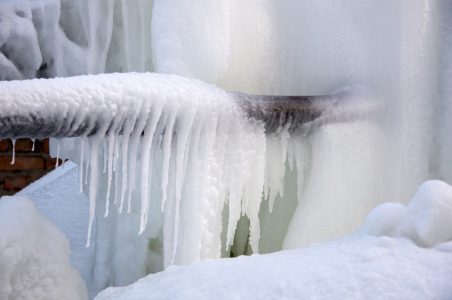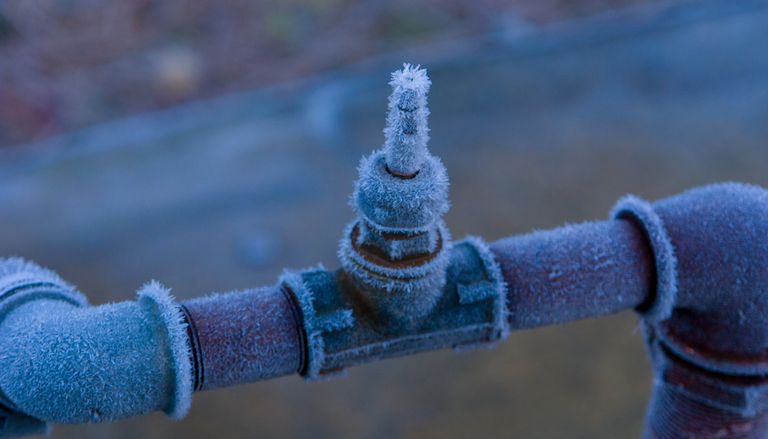Key Approaches for Avoiding Frozen Pipes in Winter
Key Approaches for Avoiding Frozen Pipes in Winter
Blog Article
Everyone has their own individual thinking involving How To Avoid Freezing Pipes.

Winter can ruin your pipes, especially by freezing pipelines. Right here's exactly how to avoid it from taking place and what to do if it does.
Intro
As temperatures decline, the risk of frozen pipelines boosts, potentially bring about costly repairs and water damages. Understanding exactly how to stop icy pipes is crucial for property owners in cool environments.
Understanding Frozen Pipelines
What creates pipes to freeze?
Pipelines ice up when exposed to temperature levels below 32 ° F (0 ° C) for expanded durations. As water inside the pipes freezes, it expands, putting pressure on the pipe walls and potentially causing them to rupture.
Threats and problems
Icy pipes can result in water disruptions, building damages, and costly repair services. Burst pipes can flooding homes and create extensive structural damages.
Indications of Frozen Pipeline
Identifying icy pipelines early can prevent them from rupturing.
How to identify icy pipelines
Try to find decreased water flow from faucets, unusual odors or noises from pipelines, and noticeable frost on subjected pipes.
Prevention Tips
Insulating susceptible pipelines
Cover pipes in insulation sleeves or use warmth tape to protect them from freezing temperature levels. Focus on pipelines in unheated or outside locations of the home.
Heating strategies
Keep indoor rooms appropriately warmed, specifically locations with pipes. Open cabinet doors to enable cozy air to circulate around pipelines under sinks.
Securing Outside Pipes
Yard pipes and exterior taps
Separate and drain garden hoses before winter. Install frost-proof faucets or cover exterior faucets with shielded caps.
What to Do If Your Pipes Freeze
Immediate activities to take
If you suspect frozen pipelines, maintain faucets available to relieve stress as the ice melts. Use a hairdryer or towels taken in hot water to thaw pipes gradually.
Long-Term Solutions
Structural changes
Think about rerouting pipes far from exterior wall surfaces or unheated locations. Add additional insulation to attics, cellars, and crawl spaces.
Updating insulation
Buy high-quality insulation for pipelines, attics, and walls. Appropriate insulation helps preserve consistent temperature levels and reduces the danger of icy pipelines.
Verdict
Avoiding frozen pipes requires positive actions and fast responses. By comprehending the reasons, signs, and preventive measures, property owners can secure their plumbing throughout cold weather.
5 Ways to Prevent Frozen Pipes
Drain Outdoor Faucets and Disconnect Hoses
First, close the shut-off valve that controls the flow of water in the pipe to your outdoor faucet. Then, head outside to disconnect and drain your hose and open the outdoor faucet to allow the water to completely drain out of the line. Turn off the faucet when done. Finally, head back to the shut-off valve and drain the remaining water inside the pipe into a bucket or container. Additionally, if you have a home irrigation system, you should consider hiring an expert to clear the system of water each year.
Insulate Pipes
One of the best and most cost-effective methods for preventing frozen water pipes is to wrap your pipes with insulation. This is especially important for areas in your home that aren’t exposed to heat, such as an attic. We suggest using foam sleeves, which can typically be found at your local hardware store.
Keep Heat Running at 65
Your pipes are located inside your walls, and the temperature there is much colder than the rest of the house. To prevent your pipes from freezing, The Insurance Information Institute suggests that you keep your home heated to at least 65 degrees, even when traveling. You may want to invest in smart devices that can keep an eye on the temperature in your home while you’re away.
Leave Water Dripping
Moving water — even a small trickle — can prevent ice from forming inside your pipes. When freezing temps are imminent, start a drip of water from all faucets that serve exposed pipes. Leaving a few faucets running will also help relieve pressure inside the pipes and help prevent a rupture if the water inside freezes.
Open Cupboard Doors
Warm your kitchen and bathroom pipes by opening cupboards and vanities. You should also leave your interior doors ajar to help warm air circulate evenly throughout your home.

We were made aware of that report about 6 Ways to Prevent Frozen Pipes through a friend on our other blog. Sharing is caring. Helping others is fun. Thanks a lot for being here. Don't forget to come visit our site back soon.
Click Here Report this page